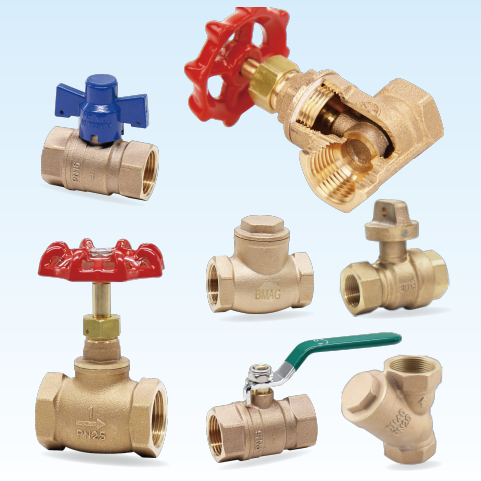Spis treści
Dźwignia kolankowaCo to jest zawory dzr?
Zawory DzR, Znany również jako zastawka odporna, jest wykonany z konkretnego mosiądzu. Na przykład,CW602N, CW625N i CW724R. Dezinfification powoduje korozję, głównie wtedy, gdy mosiądz jest narażony na środowisko o wysokich stężeniach wilgoci i tlenu. Zapotrzebowanie na zawory DzR stale rośnie ze względu na ich niski koszt, Odporność na korozję, wytrzymałość, przewodność elektryczna i zdolność. Z tymi cechami, Wyglądają lepiej niż normalne materiały miedziane i inne stopy.

Co to jest zawór brązowy?
Głównymi elementami zaworów brązowych są cyna i miedź. Inne elementy stopowe, takie jak aluminium lub mangan, są dodawane do cynku i miedzi w celu uzyskania określonych właściwości. Na przykład,C83600 , C84400 i C89833.
W porównaniu do materiału DzR, Brąz był używany najdłużej, ale powoli został porzucony ze względu na rosnące koszty.

Różnice w specyfikacjach dzr i brąz
Głównie różnica to skład chemiczny i właściwości fizyczne:
| Skład chemiczny. | RDA | Brązowy |
| Miedź. | 61-63% | 84-86% |
| Cynk. | / | 4-6% |
| Ołów. | 1.7-2.8% | 4-6% |
| Cyna. | 0.1% | 4-6% |
| Inni. | Śladowe ilości żelaza, arsen, i zanieczyszczenia. | Śladowe ilości aluminium, Mangan, Nikiel, lub cynk. |
Właściwości fizyczne DzR vs. Brązowy
| Właściwości | RDA | Brązowy |
| Przewodność elektryczna. | 26% IAC. | 7.4 × 10 Six Siemens/M. |
| Moduł elastyczności. | 106 KN/ mm2 | 72.4 KN/ mm2 |
| Punktem topnienia. | 910° C.. | 1040 ° C. |
| Gęstość. | 8.43G / CM3 | 8.8 G / CM3 |
| Ciepło właściwe. | 0.377 KJ/kg k | 0.435 KJ/kg k |
| Przewodność cieplna w 20 ° C. | 117 W/m ° k | 85 W/m ° k |
| Współczynnik rozszerzalności cieplnej. 20-200° C. | 20.7 × 10-6 dla ° C | 17 × 10-6 dla ° C |
| Rezystywność elektryczna. | 0.066 OHM MM2 /M. | 13.5Ohms |
Zawór dzr & Temperatura robocza zaworu z brązu
Zawory DZR mają wysoką temperaturę roboczą, która wynosi od -20 ° C do 120 ° C w porównaniu z tradycyjnymi zaworami mosiężnymi. Z drugiej strony zawory brązowe mają znacznie wyższe temperatury pracy. Temperatura robocza dla zaworów brązowych zależy od określonego składu stopu i zastosowania. Na przykład, Aluminiowy zawór brązowy może obsługiwać temperatury od około 100 ° C do 400 ° C.
Zawór dzr & Brązowy ciśnienie robocze
Presja robocza zaworu brązowego zależy również od jego składu, Projekt zaworu, i aplikacja. Do zastosowań o niskim ciśnieniu, presja robocza może być w pobliżu 150 psi, podczas gdy aplikacje wysokiego ciśnienia mogą osiągnąć 1500 psi. Innymi słowy, Zawory DZR obejmują również ciśnienie robocze w zależności od różnych czynników, takich jak zastosowanie, Projekt zaworu, Zastosowany materiał, i rozmiar. Oznacza to, że możesz osiągnąć ciśnienie działające tak niskie, jak 150 psi i tak wysoko jak 1500 psi lub więcej.
Po co używać zastawki dzr
- Unikalna struktura: Zawory dzr zawierają zagęszczoną strukturę ciała. Surowce w jego składzie mają bardzo wysoką wytrzymałość na rozciąganie. Daje mu nie tylko grubszy system, ale także umożliwia wysoką ochronę. To ścisłe wyrównanie zaworów dzr sprawia, że są wysoce odporne na zwiększone ciśnienie.
- Odporna na korozję: Skład chemiczny DzR ujawnia obecność arsenu. Dodaje do opornych na korozję właściwości zaworów dzr. Oprócz, Zawory DZR są najbardziej znane ze swoich niezwykłych wydajności w wodzie morskiej. Mogą wytrzymać wysoką zawartość soli wody morskiej bez korozji lub uszkodzenia.
- Kontrola przepływu: Zawory DZR doskonale kontrolują przepływ wody lub inne ciecze. Zatrzymują cynk przed uzyskaniem korozji. Dlatego, Żadne cynk nie jest uwalniane w płynnych płynach. Zawory DzR mają produkty kontrolne w szerokim zakresie. Są najlepsze do celów kontroli wody. Szczególnie w przypadku wody pitnej, Nie zanieczyszczają wody utraty metali.
Po co używać zaworu z brązu
- Własność plastyczna: Złącze hydrauliczne muszą poradzić sobie z wieloma zmianami. Zazwyczaj, Musimy wprowadzić niewielkie regulacje podczas instalowania zaworów. Zawory brązowe są bardziej elastyczne. Możemy je szybko narysować, podgrzewając je w określonej temperaturze.
- Opłacalny: Zawory brązowe są prawdopodobnie jedynymi na rynku, które kosztują mniej niż inne stopy metaliczne. Zapewniają nam najlepszą wersję usług, zachowując przyjazne dla budżetu. Jest to jeden z solidnych powodów, dla których powinieneś używać zaworów brązowych.
- Odporność na słoną wodę: Kilka metali, Jak mosiądz, są bardzo wydajne, ale nie mogą dobrze działać w słonej wodzie. Jednakże, Brąz jest idealny do radzenia sobie ze słoną wodą w operacjach morskich. Jest równie skuteczny w przypadku miękkiej i twardej wody. Możemy powiedzieć, że brąz jest dobry w odporności na korozję i odporność na słoną wodę.
Wniosek
DZR i brąz to wydajne stopy metali. Różnią się kilkoma właściwościami, ale ma swoje własne funkcje. Jeśli wybierzesz jeden z tych produktów, Sugerujemy dokładnie przeanalizowanie swoich wymagań. Następnie, Wybierz odpowiednią w zależności od przepływu mediów zaworu, temperatura, i wytrzymałość fizyczna. Umożliwi to uzyskanie najlepszego produktu z oszałamiającymi funkcjami.







